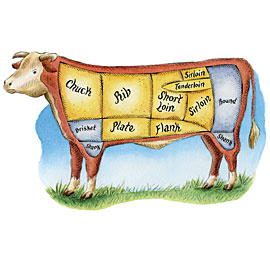I hope the title for this week’s newsletter doesn’t frighten off all the vegetarians. In fact, when I started this journey I was exploring the raw vegan diet. Who wants to kill innocent animals to eat them? I was heart broken when I realized that animals are one of the easier food sources to grow.
Every time I travel somewhere I visit farmers, homesteaders, survivalists and anyone interested in sustainability. What can they grow easily? How much time does it take to meet basic needs of food, shelter, water? Is it easier living there?
I really didn’t want to have to eat animals. Surely the tropics, where food just drips off trees, must be where humans can live a life of vegetarian ease? So I headed off to the tropics to visit a long list of organic farms, permaculture sites, and sustainable living centers.
In Costa Rica, food really does fall and rots un-eaten on the ground. But, as one farmer noted, you get very tired of eating bananas everyday. Several folks confirmed my own experiences that a fruitatarian diet (eating only fruits) is not a viable diet for the human body. What really surprised me the most was finding 20+ year vegetarians who had come to the realization that growing meat and animal products was easier than vegetables – even in the ideal world of the tropics. There they were with their goats and chickens and bunnies…..
Why are animals easier? Well, animals can move around. If it is hot they can go into the shade – and here is the key point – they go by themselves. Ditto for meeting their needs to stay warm in winter. If they are thirsty, they’ll go get a drink when they need it. If you’ve set them up to be free-range, they’ll go also feed themselves. They’ll move where they need to to be comfortable.
With plants, you have to be out there regularly feeling the soil and checking if they need water. You’ll need to make shade for them if it gets too hot. You’ll need to protect them if there is a freeze coming. You have to bring them nourishment and water. It is a lot of work.
Any food production system is going to need a large diversity of food sources. Fruits, vegetables, nuts, and meat. It was a big surprise to me to realize how important the meat part was.
Of all the thousands of emails I’ve gotten in response to the video I created, a surprising number comment on the home butchering section – saying something like this “the animals were treated with such love and respect, I know I could do it myself if I had to”.
Not only could you home butcher, but you can.
Marjory Wildcraft is an Expedition Leader and Bioneer Blogger with The [Grow] Network, which is an online community that recognizes the wisdom of “homegrown food on every table.” Marjory has been featured as an expert on sustainable living by National Geographic, she is a speaker at Mother Earth News fairs, and is a returning guest on Coast to Coast AM. She is an author of several books, but is best known for her “Grow Your Own Groceries” video series, which is used by more than 300,000 homesteaders, survivalists, universities, and missionary organizations around the world.








COMMENTS(2)
Test post!
Great article!
I recently discovered this myself. I have been raising a garden, sheep, beef and poultry for years now. Having some health issues, I decided to try the lion, carnivore and keto diets with fasting. I couldn’t believe the benefits and how quickly they happened. I also discovered I had so much more spare time not having to be in the garden so much! I am getting back into more of a keto diet with vegetables but more of the allium and cruciferous types. I also noted how the organ meats supplied me with all the vitamins and minerals needed, including vitamin C. I love animals and thank them each time one is harvested. They are truly amazing. They are able to turn native and wild grasses into every nutrient we need to survive and actually help the environment at the same time.